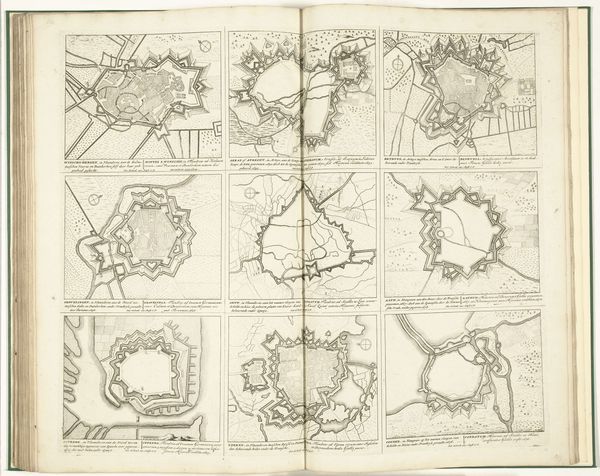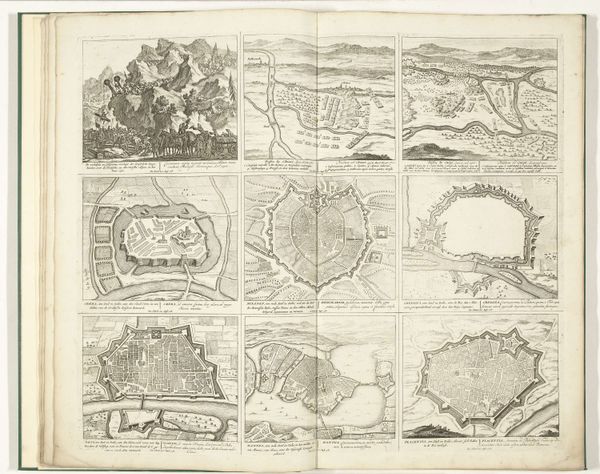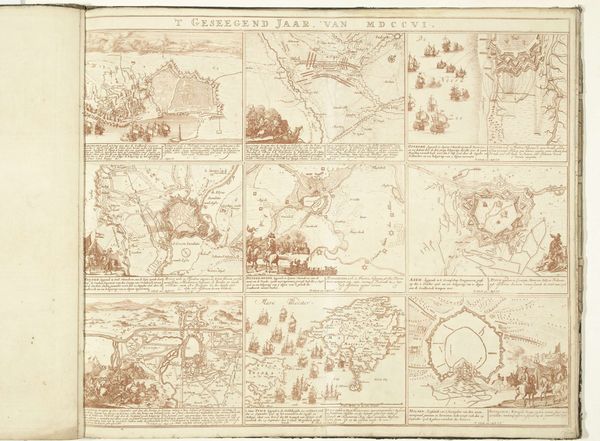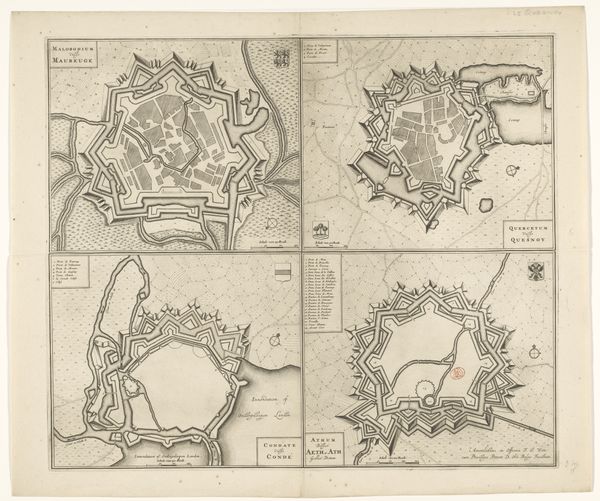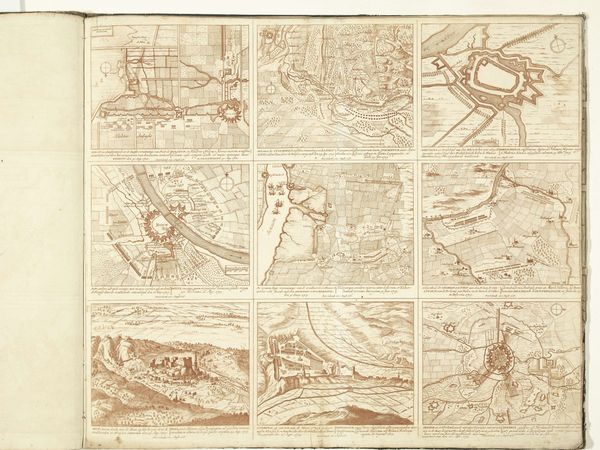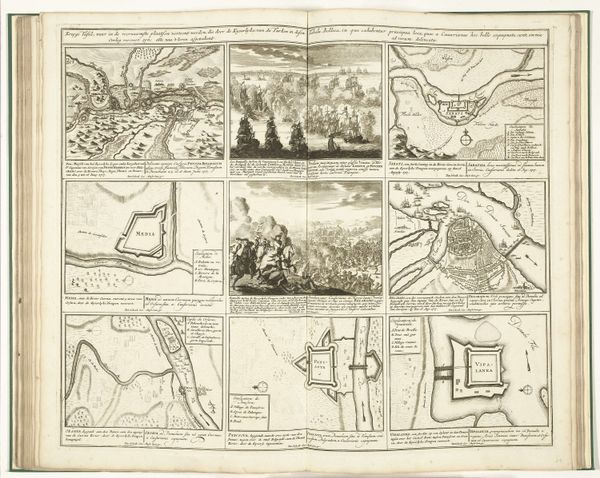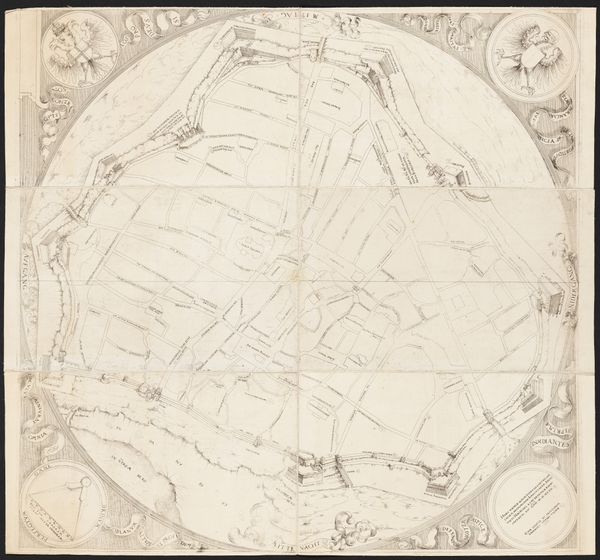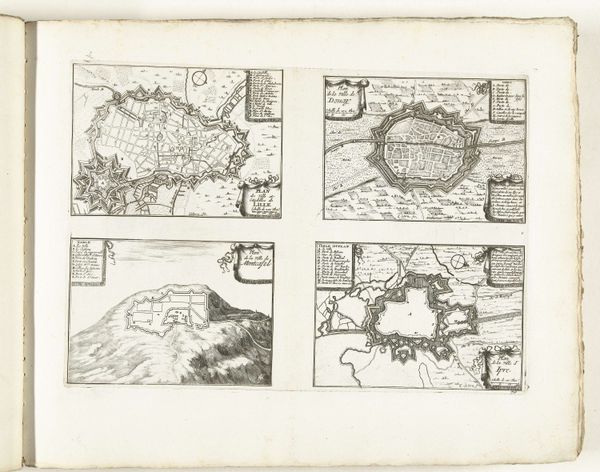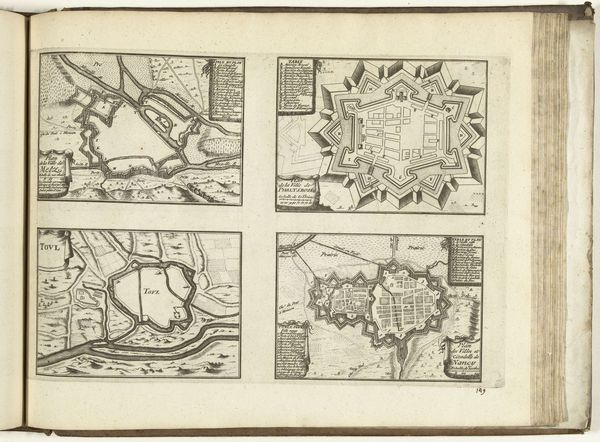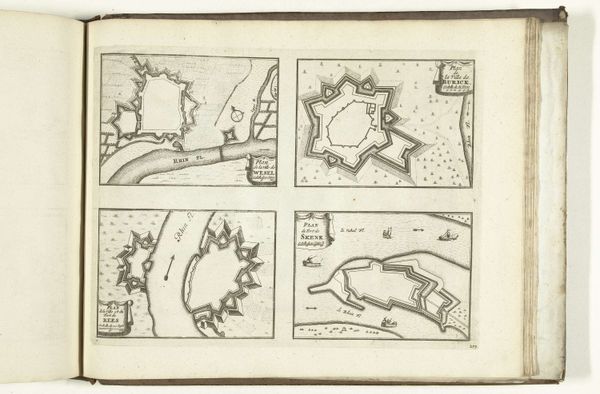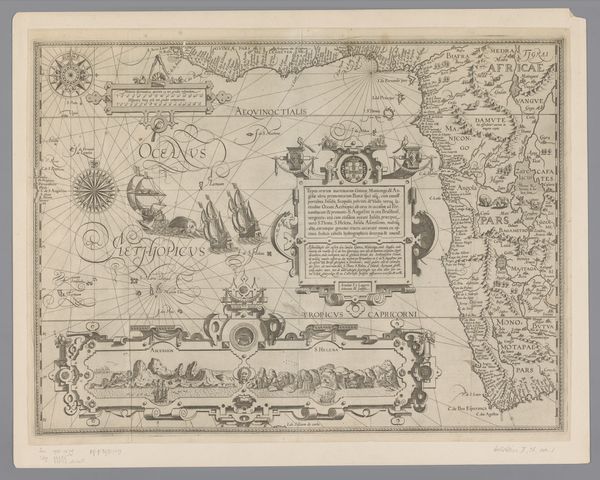
Schouwburg van den oorlog (blad XXXI), ca. 1700-1710 Possibly 1700 - 1710
0:00
0:00
drawing, print, ink, pen
#
drawing
#
baroque
# print
#
pen sketch
#
landscape
#
ink
#
geometric
#
pen
#
cityscape
#
academic-art
#
miniature
Dimensions: height 505 mm, width 585 mm
Copyright: Rijks Museum: Open Domain
Editor: Here we have "Schouwburg van den oorlog (blad XXXI)," a pen and ink drawing, possibly from 1700 to 1710, by Pieter Schenk. It's a series of miniature cityscapes laid out in a grid, almost like architectural plans. I’m struck by the precision of the linework. What aspects of its composition stand out to you? Curator: Immediately, the geometrical aspect commands attention. Observe how each plan, while distinct, employs variations of polygonal shapes, reinforcing an underlying structural principle. Note also the consistent use of line – thin and unwavering – to define form. Consider the relationship between positive and negative space. The fortified structures are clearly delineated, set against a more diffuse background created with varied hatching techniques. This contrast heightens the visual impact and emphasizes the architectonic features of each plan. Editor: So, the artist is focusing our attention on pure shape and form rather than the overall scene itself. Are these designs following an established standard or aesthetic? Curator: Indeed. Notice the adherence to symmetry and proportion within each plan. This echoes the classical ideals prevalent in the Baroque era, even in cartographic representations. Are you perceiving the repeated geometric motifs like stars and zigzags in their use as both structural fortifications and compositional devices? This reveals an intrinsic preoccupation with order and control in organizing both space and image. It suggests a theoretical or idealized approach to warfare, focusing on strategic layout rather than any chaotic lived experience. Editor: That's a very interesting point! I didn't quite consider the strategic aspect. Thank you. I see it now, how he merges functionality with form, creating an interesting aesthetic in itself. Curator: Precisely. Reflect upon how a drawing transcends its function and becomes art through manipulation of elements like line, space and form.
Comments
No comments
Be the first to comment and join the conversation on the ultimate creative platform.

